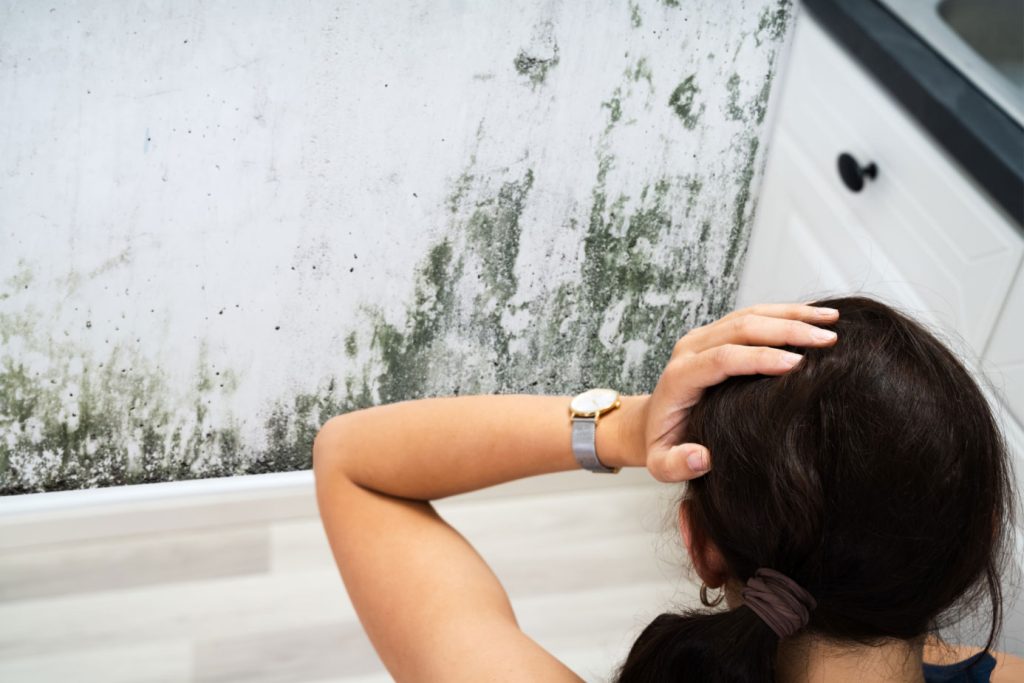
Water Helps Mold Grow
Water leaks often result in mold growth. Mold begins to grow rather quickly when a water intrusion happens, but not all water leaks are accompanied by mold.
The introduction of excessive moisture into the home creates an environment that fosters the growth of mold indoors.
Mold loves to grow on plywood, paneling, furniture, fabric, paper, and drywall. The mold breaks down organic materials as it grows on these surfaces (Take this library for example).
Mold can cause serious damage if left unchecked. The solution to unwanted mold is to properly control the moisture.
If there’s recently been a leak, the homeowner should take immediate action to halt the growing mold by eliminating or reducing the unwanted moisture.
The Rate of Mold Growth
Many factors have a bearing on the rate at which mold grows in the wake of a water damage mess. Warmer temperatures and higher humidity accelerate mold germination.
Some species of mold are more aggressive than others.
Different types of materials are also a factor. Porous, organic surfaces are a breeding ground for mold spores.
In general, mold will begin to grow within 24 to 48 hours after a water leak. The window to stop the mold from maturing is narrow.
Mold spores are microscopic. They can be growing on surfaces long before the evidence is visible.
There is a lot of debate on how long it takes mold to become visible. Experts claim the timeframe could be anywhere from 3 to 21 days.
By the time any mold is detectable, the spores have likely been colonizing for some time.
As mold spores grow, they release more mold spores into the air that can float around and attach to other surfaces.
Quick action is the best way to prevent mold from growing in the event of a water leak.
Don’t Wait to Take Care of the Issue
Not every water obtrusion will result in microbial growth, though the potential for a mold problem will be present.
Delays in water removal and drying increase the likelihood of major mold issues. Excess water, moisture, and humidity should be mitigated rapidly.
Every hour water is allowed to go unaddressed increases the chance of secondary damage, including mold. If a water damage disaster goes 48 hours without being addressed, assume mold is growing.
Preventing Mold Cultivation After Water Damage
Follow these precautionary steps to lower the risk of a mold outbreak after a water release or water intrusion from flooding or storm damage.
- Identify and repair leaks as soon as they are discovered
- Clean up standing water and remove excess moisture immediately, according to the EPA
- Items that cannot be cleaned or completely dried should be removed from the home
- Reduce humidity levels by running a dehumidifier(s)
- Run fans to increase air circulation
- Do not neglect hidden moisture behind walls and under flooring
When to Seek Professional Help
Call in some help to clean up water and mold if it would take you more than an hour or two on your own.
Any restoration company will have extractors to handle large amounts of water and solutions to combat mold.
Dehumidifiers are placed to lower humidity and dry materials. Powerful fans are set up to increase air circulation. Building materials should only be removed when they impede drying.
A moisture-detecting device measures humidity and moisture levels to ensure a thorough drying process.
Rapid response and quick cleanup greatly reduce the odds of a mold infestation.
To learn more about our water damage cleanup and mold removal services, contact the office by phone at (512) 934-8180 or by email at info@allnationrestoration.com







